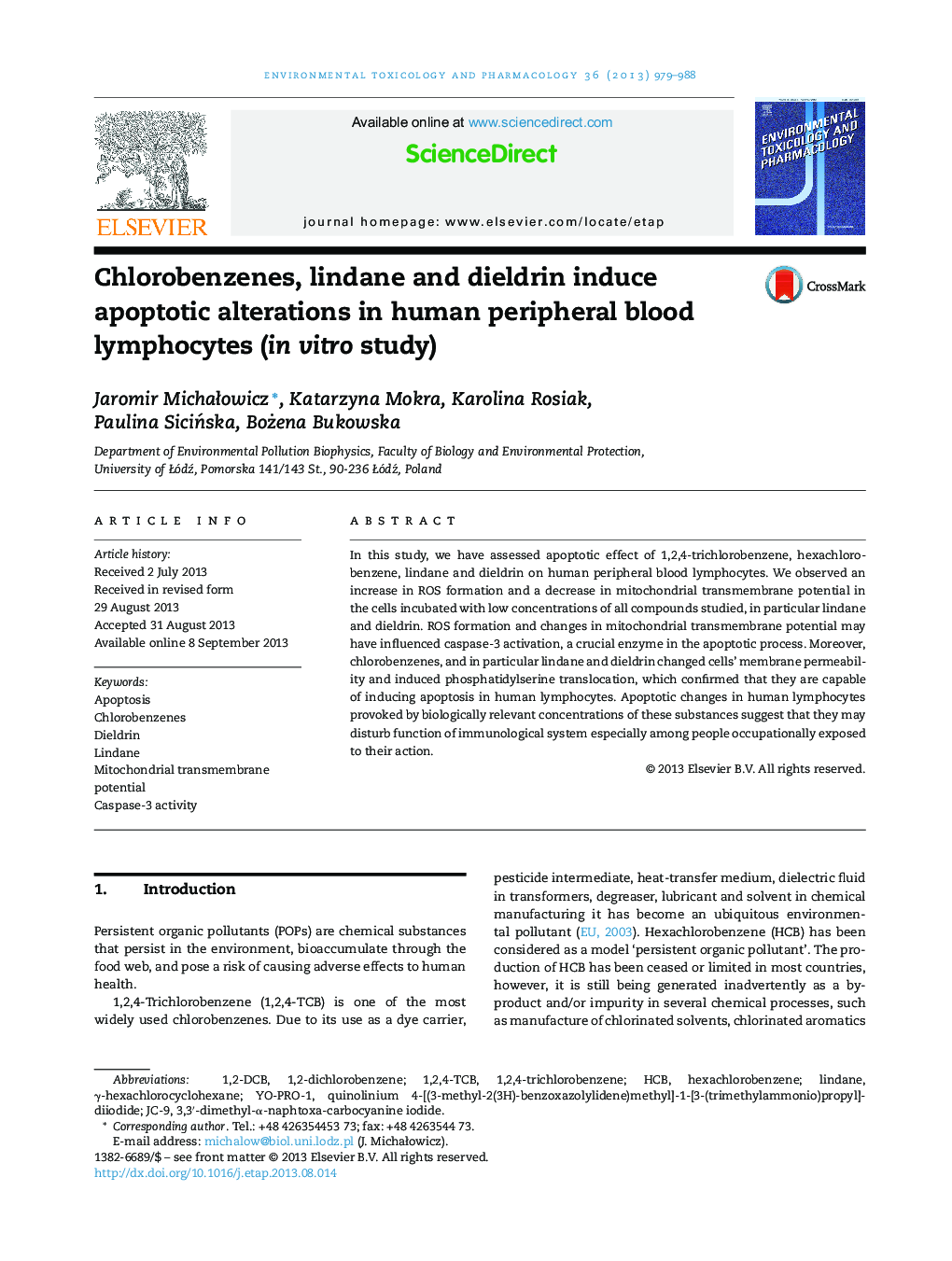| Article ID | Journal | Published Year | Pages | File Type |
|---|---|---|---|---|
| 2583094 | Environmental Toxicology and Pharmacology | 2013 | 10 Pages |
•The effect of chlorobenzenes, lindane and dieldrin on human lymphocytes was studied.•The compounds induced ROS formation and mitochondrial membrane potential reduction.•All substances studied induced at low concentrations caspase 3 activation.•The compounds examined altered cell membrane properties characteristic for apoptosis.•Lindane and dieldrin caused the strongest, while TCB the weakest apoptotic changes.
In this study, we have assessed apoptotic effect of 1,2,4-trichlorobenzene, hexachlorobenzene, lindane and dieldrin on human peripheral blood lymphocytes. We observed an increase in ROS formation and a decrease in mitochondrial transmembrane potential in the cells incubated with low concentrations of all compounds studied, in particular lindane and dieldrin. ROS formation and changes in mitochondrial transmembrane potential may have influenced caspase-3 activation, a crucial enzyme in the apoptotic process. Moreover, chlorobenzenes, and in particular lindane and dieldrin changed cells’ membrane permeability and induced phosphatidylserine translocation, which confirmed that they are capable of inducing apoptosis in human lymphocytes. Apoptotic changes in human lymphocytes provoked by biologically relevant concentrations of these substances suggest that they may disturb function of immunological system especially among people occupationally exposed to their action.
